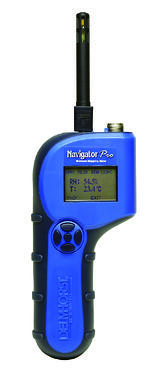Natural disasters are a major concern for most parts of the U.S. Floods, hurricanes, tornadoes, earthquakes, mudslides, blizzards, and other natural events can leave enormous amounts of devastation in their wake. Following many of these events, disaster recovery specialists may need to work nearly around the clock to remediate the damage caused.
One vital tool for disaster recovery professionals would be moisture meters. Why are moisture meters so important for restoration work following a natural disaster?
Why Moisture Meters are a Must for Post-Disaster Recovery
Following a natural disaster, there is often extensive damage to structures in the area—hurricane-force winds can strip roofing tiles from a building, earthquakes can crack foundations, and heavy rainfall can force water into crevices that normally wouldn’t be susceptible to moisture intrusion.
This damage can allow vast amounts of water into structures all at once. Over time, this excess moisture can seep into various building materials and cause further damage. Moisture meters can be used to measure the amount of moisture present in various building materials—helping restoration experts track the progress of dry-out efforts.
Using moisture meters for water cleanup restoration efforts can make work more efficient by letting restoration professionals measure the exact amount of moisture present. In addition to letting professionals monitor how dry-out is progressing, moisture meters can be used to document precise moisture content measurements—which can be used to resolve potential disputes by proving the necessity of specific dry-out/tear-out operations.
What Moisture Meters Are Best Suited for Water Damage Restoration?
Moisture meter distributors who serve water damage restoration specialists may need to consider many different factors when stocking meters for flood damage restoration:
- How Many Different Materials Can the Meter Be Used With? The more materials that a moisture meter can accurately measure moisture in, the better. Some moisture meters have different reading scales for wood, gypsum, and other materials.
- Meter Accuracy. Meter accuracy is one of the most important aspects of a moisture meter for flood damage restoration work. Inaccurate measurements can compromise restoration work. Meters that have built-in calibration checks can make it easy to verify their accuracy in the field so you know you can trust the measurements you’re getting.
- Moisture Measurement Method. Does the moisture meter use pin or pinless measurement? Pinless meters are great at getting fast results in solid materials with a flat surface, while pin-type meters can get accurate measurements in materials with uneven surfaces that pinless meters cannot scan.
- Ability to Store and Transmit Readings. For professionals, the ability to record moisture measurements can prove invaluable for documentation purposes. If the moisture meter can store readings for later transmission, it can help justify decisions made during dry-out/tear-out work. It also helps prove that any applicable standards for testing moisture on the job site were followed.
- Buyer Budgets. In a perfect world, every professional would have the budget to give all of their people top-of-the-line device for their work. However, in the real world, most water damage restoration company owners can only afford to spend so much on testing devices. So, it’s important to have a range of options for restoration companies with different budgets.
Considering all of the different criteria for picking a restoration moisture meter, which one would be the best for restoration work?
 One strong candidate is Delmhorst’s Navigator Pro 3-in-1 moisture meter. This device has three different reading scales: wood, drywall, and reference. This allows the meter to measure moisture in a wide variety of materials. By using the pinless scanning mode, professionals can get a quick relative indication of moisture in building materials, while the pin-type moisture testing mode can be used to get more quantitative measurements of moisture. The built-in thermo-hygrometer is also useful for tracking overall dry-out progress in a structure because it can monitor the relative humidity (RH) of the area being dried out.
One strong candidate is Delmhorst’s Navigator Pro 3-in-1 moisture meter. This device has three different reading scales: wood, drywall, and reference. This allows the meter to measure moisture in a wide variety of materials. By using the pinless scanning mode, professionals can get a quick relative indication of moisture in building materials, while the pin-type moisture testing mode can be used to get more quantitative measurements of moisture. The built-in thermo-hygrometer is also useful for tracking overall dry-out progress in a structure because it can monitor the relative humidity (RH) of the area being dried out.
Another good contender would be Delmhorst’s TechCheck PLUS 2-in-1 moisture meter. The pin and pinless measurement modes of this device are every bit as capable as the Navigator Pro, but the meter is more affordable because it omits the other device’s thermo-hygrometer. This makes it a great choice for restoration experts needing a great moisture testing device, but maybe not in need of a RH-measuring device, on a budget.
Because different restoration experts will have different needs for functionality and budget, it is vital for moisture meter distributors to carry a wide variety of trustworthy, reliable tools to serve different customers’ needs.
Delmhorst has decades of experience in helping moisture meter distributors meet the needs of their customers. Need help meeting the needs of your customers? Contact Delmhorst Instrument Co. for help and advice, or become a Delmhorst distributor today!

Comments